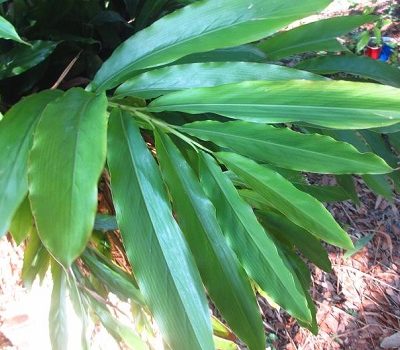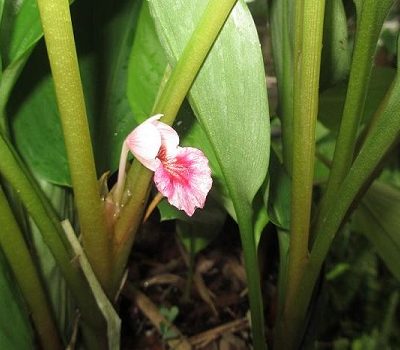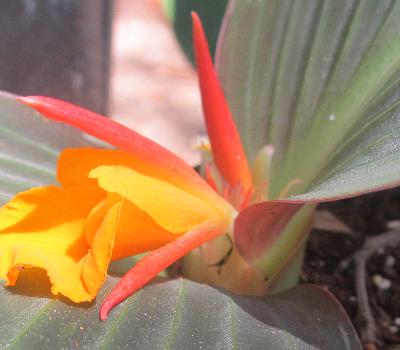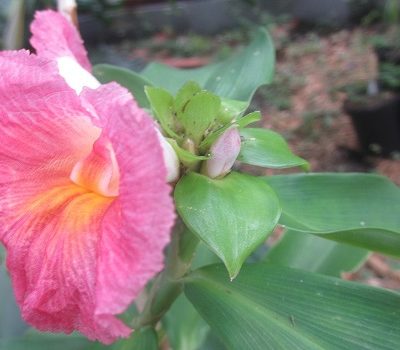Costus fissiligulatus
This African spiral ginger is the bloomiest plant of any Costus I’ve ever grown. They stay on the small side at about three feet tall, but the flowers are on the large side at two and a half inches across. This plant is rather rare in the plant trade, so there is not a lot of information about them out there.
Costus fissiligulatus is probably my favorite plant from the genus Costus. The flowers are a striking rosy pink with yellow in the center. They bloom and bloom all Summer long. They also produce many plantlets from the older stems, so they are very easy to propagate. I haven’t been growing them for too long, so I’m not sure how cold tolerant they are. This ginger is from Gabon in Africa.
Origin
Africa
Family
Costaceae
Binomial nomenclature
Costus fissiligulatus
Common names
African Princess
Description
Costus fissiligulatus is a medium height ginger with spiraling foliage typical of the family costaceae. The stems, which are true stems, spiral like a corkscrew, and the leaves themselves spiral around the main stem. The dark green leaves are 8″ long and 3″ wide, with a light green velvety underside. The terminal inflorescence is torch shaped with inconspicuous green bracts. Striking pink corollas with a yellow center, emerge sequentially from between the bracts. This plant blooms prolifically throughout the Spring and Summer.
Height
3′-4′ tall.
Temperature/Zone
zone 9b, 32°F. Cold nights below 50°F, cause this plants leaves to droop, but it is not permanently damaged by this. This plant is still rather new to the plant trade so I am not certain as to how low it is capable of tolerating, but I would suggest protecting it near or below freezing temperatures.
Light
Part sun to shade.
Water
Keep them evenly hydrated.
Fertilizer
a well balaced fertilizer during the growing months.
Cultivation
Costus fissiligulatus is a very easy plant to grow. I have found them to need no special care that differs from any other plant in the genus Costus.
Pests
I have not found any pests to be a problem for this plant in Florida.










Wow! After all I got a website from where I be able to actually take useful information concerning my study and knowledge.
It’s very effortless to find out any topic on web as compared to books, as I found this piece of writing at this website.
Thanks!
Thank you for every other informative blog. The place else may I am getting that
type of information written in such a perfect manner?
I have a venture that I am simply now running on, and I’ve been on the glance out for such information.
Do you have this plant, Costus fissiligulatus, for sale?
Yes I do, email me if you are still interested